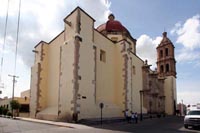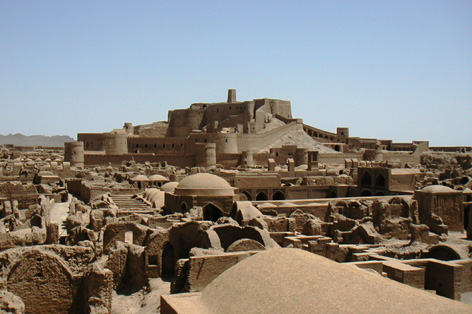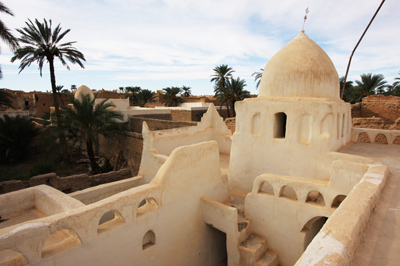World Heritage Case Study

For almost three thousand years, Mesoamerica was the site of several advanced Amerindian civilizations such as the Olmec, the Maya and the Aztecs. Already from that time people were building their houses with adobes and wattle and daub. Even the religious and monumental architecture was using adobes and earth material: the pyramids of Teotihuacan were built by the Maya with adobe / compacted earth and covered with volcanic stones.
Nearly nothing remains from the rural and urban earthen architecture that were built long ago by these civilizations, expect at Paquimé in the northern state of Chihuahua. The Spanish conquistadors adopted the traditional way of building, the adobes, to build a typical colonial architecture: rural, urban and religious.

Arg-e-Bam, the Citadel of Bam was a fortified medieval town built on the southern edge of the Iranian plateau. It was built with adobe bricks, both for its walls and vaulted roofs.
The first human settlement in the area can be traced back to the 5th BC. Arg-E-Bam flourished until 1880 and since 1900 it has been progressively abandoned due to the new city of Bam being built close by. Nobody lived there from 1932 onwards.
Restoration of the city stared in the 1970 and the devastating earthquake of 2003 destroyed most of the remains.

Ghadames, “the Pearl of the desert”, is an oasis in the Libyan Sahara. The city was known as an important stage on the trans-Sahara trade route.
The Old Town of Ghadames was entirely built with adobe bricks, lime and palm tree trunks. Abandoned in the 1970’s, it is still used in the summer as its architecture provides better protection against the heat.
Ghadames is a World Heritage Site since 1986.

Taos Pueblo or Pueblo de Taos is located in the valley of a small tributary of the Rio Grande. This Pueblo Indian settlement consists of adobe dwellings and ceremonial buildings. It was established in the 13th and early 14th century and is the best preserved of all the pueblos north of the borders defined by the treaty of Guadalupe Hidalgo (1948).
Taos is a remarkable example of a traditional type of architectural ensemble from the pre-Hispanic period of the Americas. The determination of the latter-day Native American community successfully preserved its traditions from the pressures of modern society.
Contact US
- Address:Auroville Earth Institute, Auroshilpam, Auroville 605 101 - T.N. India
- Phone:+91 (0) 413 - 262 3330 / 262 3064
- Email:info@earth-auroville.comOpens in your application

